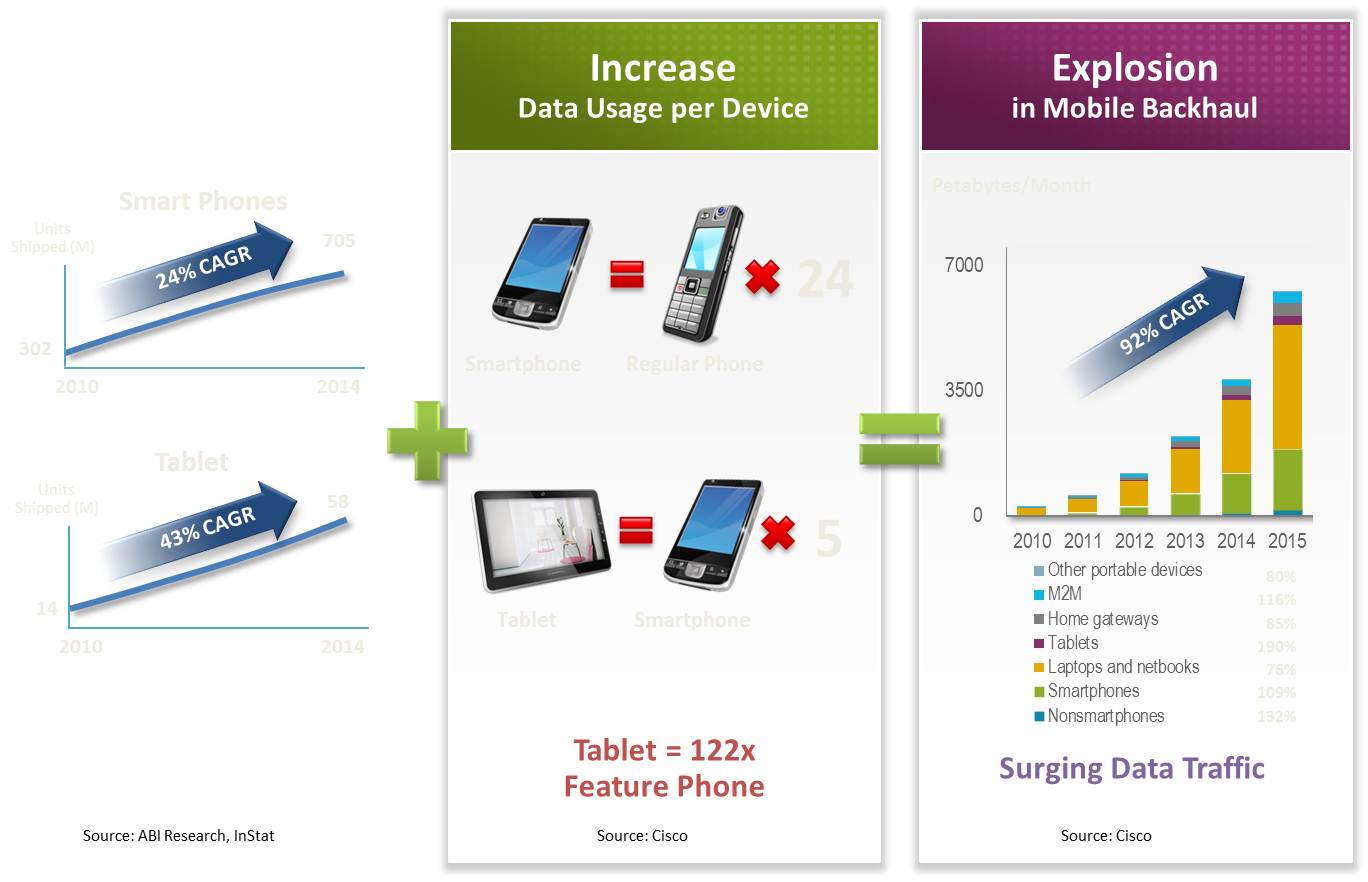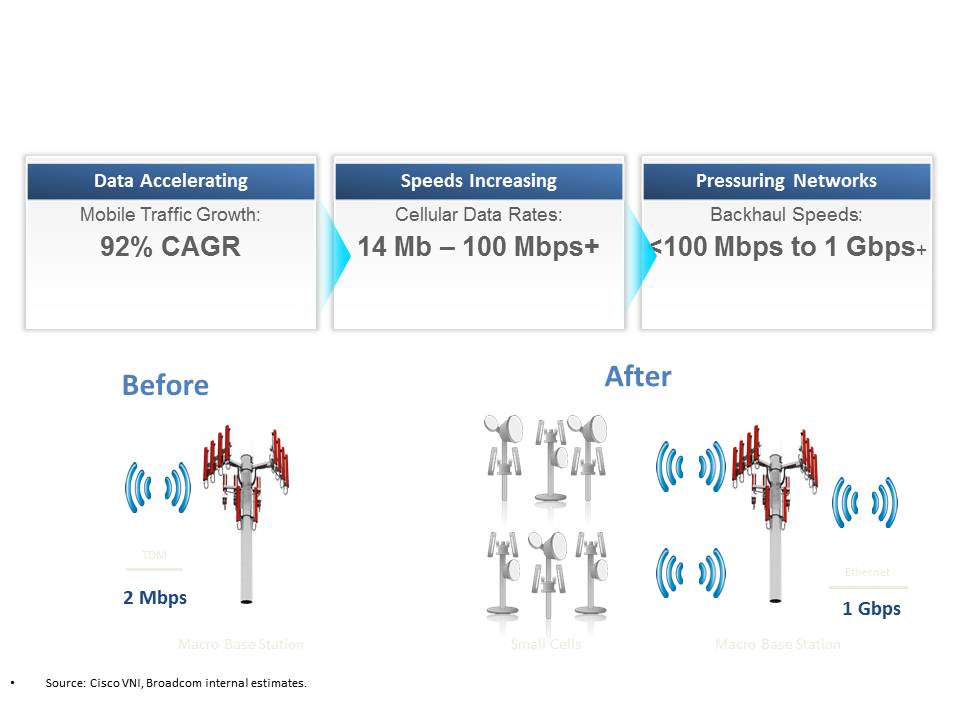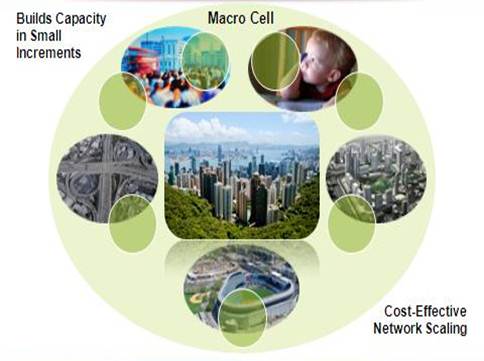This article originally appeared in the October 2012 issue of INTERNET TELEPHONY.
Digital-content consumption is on a steep incline with more consumers downloading large amounts of data via smartphones, tablets and other mobile devices. Consider these sobering facts: By 2015 there will be 15 billion network connections, the number of mobile devices will be two times the world’s population, app downloads will reach 47 billion per year, and one million minutes of video will cross the Internet every second.
Combine this with the fact that on average a tablet PC demands 122 times more bandwidth than a feature phone, and it’s easy to see why Internet traffic is expected to increase 18-fold.

Exponential demand drives growth in mobile backhaul
Existing mobile networks, typically built on legacy time-division multiplexing technology for backhaul, are already reaching capacity. U.S. regulators say the crunch on the existing spectrum could come as early as next year while some carriers are already preparing by imposing data caps or limiting speeds for smartphone users.
A massive network transformation effort is under way as carriers abandon TDM technology in favor of packet-based Ethernet technology as the standard medium for mobile backhaul. Already a proven technology, Ethernet is ideal for the performance and economic challenges presented by the explosive growth of mobile traffic. Delivering up to 1,000 times higher bandwidth than a TDM-based connection, Ethernet technology provides a cost-effective connectivity solution that scales to meet rising bandwidth demands at a significantly lower cost.
These and other characteristics make it easy to see why Ethernet is expected to become the dominant carrier backhaul technology, approaching 100 percent usage in base stations by 2014.

Carriers are moving to Ethernet and small cell technologies
In addition to upgrading legacy network equipment, carriers are also looking for ways to offload the spectrum through the rollout of high-bandwidth indoor and outdoor wireless networks. More than a third of data on smartphones are now carried over Wi-Fi and by 2016, more than 3.1 exabytes of mobile data will be offloaded each month.
One approach for spectrum offload is the deployment of multiple small cell architectures. Small cells, also known as femtocells or picocells, are low-power wireless access points that operate within the licensed spectrum. Used primarily in residential and enterprise business settings, small cells communicate with the carrier network through a broadband connection, allowing users to continue using their mobile devices without an interruption in connectivity.

Carriers can relieve spectrum through the deployment of small cell architectures
Small cells are ideally suited to deliver improved coverage, capacity and signal strength in these environments and offer a relatively seamless approach for carriers to deliver greater capacity and faster data speeds while offloading traffic from the spectrum. Small cells will also benefit from LTE (News - Alert)/4G technology because the 4G standard uses a flat, IP-centric architecture that simplifies integration of the cells into the network. The IP architecture is used to drastically lower latency, which improves quality of experience, particularly for applications such as streaming video and gaming.
The architecture can also leverage self-organizing network solutions to configure and optimize the components, thus improving performance and reducing network planning and deployment costs.
Analysts predict the small cell base station market will reach 1.6 million units by 2016 as small cell vendors race to fulfill operator demand. It’s estimated that 19 percent of total mobile traffic will be carried on small cells as early as next year (up from just 7 percent in 2011).
Spanning the entire network – from the access point to the edge, to the aggregation and finally the core – high-bandwidth Ethernet solutions support the mobile experience consumers crave, with high-quality voice connections, faster app downloads and uninterrupted video streaming. For the average consumer, the upgrade of legacy networks and deployment of high-bandwidth indoor and outdoor wireless will result in a more enjoyable overall connected experience.
Edited by Braden Becker




